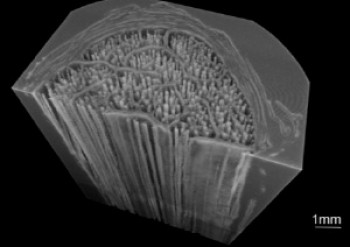Project
Role of interfascicular matrix in human tendons in relation to tendinopathy
| Primary Investigator: | Dr Dharmesh Patel |
| Co-investigators: | Ewa Spiesz |
| Chauvanne Thorpe | |
| Hazel Screen | |
| Peter Clegg | |
| Helen Birch | |
| Graham Riley | |
| Funder: | Arthritis Research UK Funded: 20262 |
Although tendon disorders like tendinopathy are commonly observed in clinical practice, their pathogenesis remains poorly understood. Tendinopathy leads to deterioration of the tendon extracellular matrix (ECM), changing its composition and structural arrangement. This ECM is a complex hierarchical structure, spanning from collagen molecules, through collagen fibrils, fibres and fascicles to build the complete tendon. As such, the relationships between matrix compositional and/or structural disorder and tendinopathy are non-trivial.
Fascicles are surrounding and separated by a non-collagenous matrix, known as the interfascicular matrix (IFM) or endotenon. Currently little is known about the IFM, but we have recent data suggesting it enables sliding between fascicles, and is subsequently critical for enabling the high levels of extensibility necessary for function some tendons, such as the Achilles. However, the role of the IFM in preventing tendons disorders and injuries remains to be discovered.
The aim of the project is therefore to establish relationships between structural /compositional optimisation of different tendon types and their mechanics, focusing on the interfascicular matrix contribution. We hypothesize that the interfascicular matrix is different in tendons with different functions, optimised to suit their mechanical requirements. Therefore we will study mechanical behaviour, structure and composition of three different human feet tendons: the energy storing Achilles tendon (AT), the positional anterior tibialis (ATT) and the posterior tibialis tendon (PTT) – a tendon with a minor energy storing function. By doing so we will uncover the structure-function specialisation in different tendon types that facilitates healthy function and thus be able to explore what predisposes certain tendons to tendinopathy. We will also study age-related changes is these tendons.
Our methodologies will includes testing the elasticity, failure and fatigue behaviour of tendons, fascicles and interfascicular matrix in uniaxial mechanical tests. In order to detect compositional and structural specialisations we will use immunohistochemistry, laser capture microdissection for proteomics, and also micro computed tomography (see figure). Having obtained structure-function relations we will identify the IFM components key in maintaining tendon function and preventing tendinopathy and determine why specific tendons and individuals are prone to injury.


